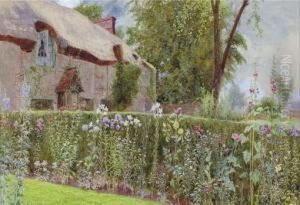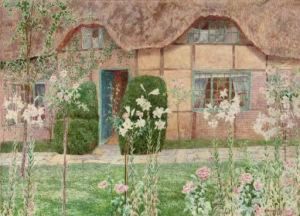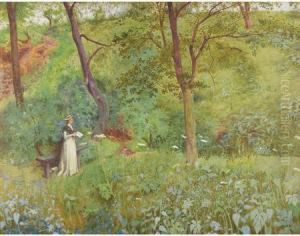John George Sowerby Paintings
John George Sowerby was an English artist, illustrator, and glass manufacturer who made notable contributions to the Arts and Crafts Movement. Born on July 27, 1850, in Gateshead, England, he was part of the renowned Sowerby family, which owned the Ellison Glass Works, a prominent glass-making business established by his grandfather in 1807. Sowerby was initially trained in the family business, where he developed a keen interest in the artistic aspects of glass production.
Sowerby attended art school in Newcastle upon Tyne and later in London. His education and passion for art significantly influenced his work in the family business, where he applied his artistic sensibilities to glass design. This led to the production of innovative glassware that combined functionality with the aesthetic principles of the emerging Arts and Crafts Movement, a trend that sought to re-establish the importance of craftsmanship amidst the industrialization of the Victorian era.
Beyond his involvement in the glass industry, John George Sowerby was also an accomplished illustrator. He is perhaps best known for his illustrations in children's books, which often featured vibrant and imaginative depictions of fairy tales and nursery rhymes. His work in book illustration was characterized by its vivid use of color and attention to detail, which resonated with the Victorian public's taste for fantasy and escapism.
Sowerby's artistic career was not limited to glass and illustration; he also painted in watercolors and exhibited his work at various institutions, including the Royal Academy. His artistic output contributed to the cultural landscape of the period and helped elevate the status of decorative arts within the broader context of art history.
John George Sowerby's contributions to art and design continued until his death on August 13, 1914. His legacy is preserved through his contributions to the Sowerby glassworks and his illustrations, which continue to be appreciated for their historical and artistic value. Sowerby's life and work reflect the intricate interplay between art and industry during the late 19th and early 20th centuries, a dynamic that shaped the visual culture of the era.


